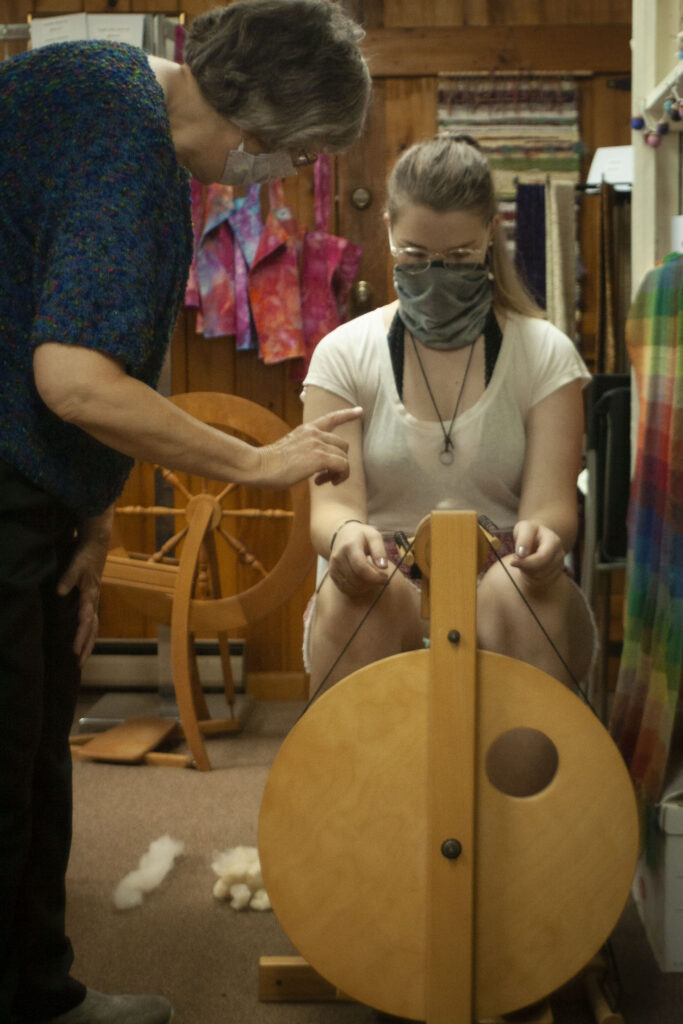We often get requests from folks about buying looms or spinning wheels. Our Village Weaver, Sharon Grist, recently shared some good advice on selecting the right spinning wheel for yourself:
“[My spinning wheel] is a workhorse wheel – nothing fancy but it gets the job done. It is a bit bulky, but straps into the car like you would buckle up a child. It is manufactured by the Louet company and the model is called an S-10. I have one at the teaching studio [at Foxfire] that has a single treadle and one that has a double treadle. I recommend that whatever wheel you end up with, choose one with a double treadle. It is better for your back because you will be moving your legs more like you are walking. While one is up the other is down. With a single treadle wheel, you are constantly working off balance and over time that is not good for your back. That said, I learned on a single treadle and if someone gives you a single treadle take it!
[If you have one near where you live, go to a] shop that sells spinning wheels and ask if you can just sit at them and treadle away. Most retailers would welcome you to. That way you can begin to get a feel for the different wheels. Or if you can get to a spinning guild, you will find spinners to be lovely people and offer you to try theirs. (We usually have knitting in another bag to work on anyway…) I think you really can’t go wrong with any wheel if your goal is medium to fine yarns. You can go wrong if you want to be making bulky, loopy art yarns and you get a wheel that doesn’t have a big enough orifice.
Besides double treadle I would also recommend a large orifice. The wheel I learned on (Ashford Traditional) has a very small orifice. The orifice the is the hole that the yarn comes through between the bobbin and the fiber in your hand. When you are learning to spin, it is very common for the yarn to break over and over and over. That is just part of the learning process until you can feel how much twist is needed to hold the yarn together. With the small orifice on the Ashford, when the yarn breaks, you have to take a bent paperclip and dig the yarn out from the bobbin to be able to attach to the fiber and get going again. The Louet orifice (I am not a representative, but do love my wheel) is big enough for me to stick my pinkie finger through and grab it. So. Much. Easier! One last recommendation is that you not buy a wheel based on how pretty it will look in your home.
If you are looking for a used wheel, I will tell you the formula I have developed over the 40 years I have been in the fiber business. If you have done your homework and know the price of the wheel you want if you were to purchase it brand new, then 50% -60% is a fair price to the buyer and the seller. For simple math lets say a new wheel is $800.00. If the seller was asking $400.00 – $475.00 ($500.00 tops) that would be fair. If they said they couldn’t take less that $700.00 you can walk away. Hope that makes sense and helps.
It is fairly simple to search online or on Facebook for “Used Spinning Wheels”. You would want to find one near to you so you can see it in person. Or ask at a spinning guild.
If you have more questions, contact Foxfire or visit Sharon after her studio is back open at the Foxfire Museum.
Some resources to look at new wheels:

Sharon teaches a Foxfire summer student how to spin on her Louet. Notice the Ashford traditional wheel in the background.